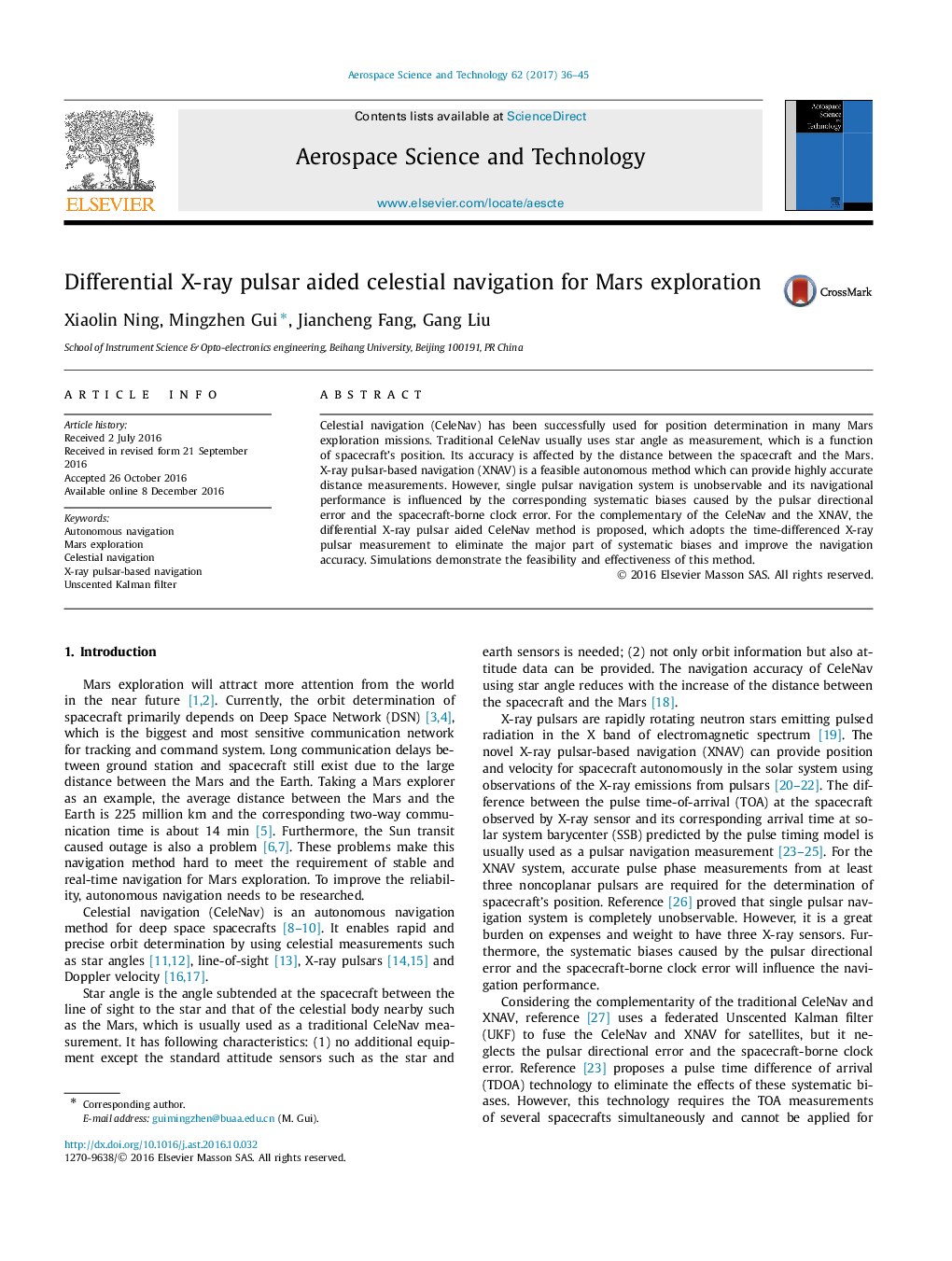| Article ID | Journal | Published Year | Pages | File Type |
|---|---|---|---|---|
| 5472834 | Aerospace Science and Technology | 2017 | 10 Pages |
Celestial navigation (CeleNav) has been successfully used for position determination in many Mars exploration missions. Traditional CeleNav usually uses star angle as measurement, which is a function of spacecraft's position. Its accuracy is affected by the distance between the spacecraft and the Mars. X-ray pulsar-based navigation (XNAV) is a feasible autonomous method which can provide highly accurate distance measurements. However, single pulsar navigation system is unobservable and its navigational performance is influenced by the corresponding systematic biases caused by the pulsar directional error and the spacecraft-borne clock error. For the complementary of the CeleNav and the XNAV, the differential X-ray pulsar aided CeleNav method is proposed, which adopts the time-differenced X-ray pulsar measurement to eliminate the major part of systematic biases and improve the navigation accuracy. Simulations demonstrate the feasibility and effectiveness of this method.
